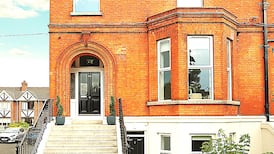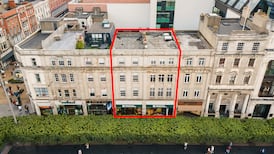Competition for houses on roads in popular neighbourhoods has pushed prices well beyond the Dublin average. Property Editor Orna Mulcahy reports
After another bumper year in the Dublin housing market, househunters are asking if prices can go much higher, and estate agents are saying there's more growth to come in 2006.
Despite the certainty of a rise in interest rates, and grim warnings from the Organisation for Economic Co-Operation and Development (OECD) that the Irish property market is overvalued, demand continues to outstrip supply for traditional family homes in the city's inner suburbs where the boom is far from over.
Figures published yesterday by Permanent TSB/ESRI show that the average Dublin house rose in value by 7.8 per cent in the first 10 months of 2005.
However, some neighbourhoods have seen rises of up to 50 per cent in the last year while certain roads have almost doubled in value since 2003.
Shrewsbury Road grabbed the headlines this summer when its most expensive house, Walford, changed hands for €58 million, but nearby Ailesbury Road has seen some hefty price hikes too.
Twelve months ago, a detached 1950s house on the road fetched €4.15 million at auction. Earlier this year, a similar house, two doors down, sold for around €6.5 million.
Across the city in Iona Drive, Glasnevin, a Strain-built detached house made a record €2.15 million this year. Two years ago the house next door fetched €1.1 million.
Prices in Ranelagh have risen at well above average rates: typical redbrick houses which fetched €600,000 to €800,000 in 2003 are now selling for up to €1.65 million.
Lisney's Tom Day, who specialises in houses at the upper end of the market, says that prices have risen by up to 20 per cent in good roads on both sides of the Liffey.
He anticipates double digit growth for next year, as buyers continue to see property as their principal investment.
Househunters are having to compete with property investors intent on building up portfolios of redbrick houses in Dublin 2, 4, 6 and 8, as well from younger buyers with big cash deposits from their parents.
Housebuilders are also targeting family homes with big gardens. On the leafy roads of Foxrock, for instance, there has been a big increase in prices for modest houses on a third to half an acre which are seen as prime redevelopment sites.
Closer to the city, prices on the better roads are also being driven up by couples choosing to move from the outer suburbs to be close to schools and workplaces. These buyers are prepared to pay a high premium for convenience, particularly if there is a village centre nearby.
They will also pay well over the odds for houses that have been lavishly renovated. This has proved a lucrative trend for investors who buy up houses in poor condition, install new kitchens and bathrooms, and sell them on at a sizeable profit.
According to Sherry FitzGerald director Simon Ensor, buyers are now targeting certain roads, not only for the house style, but as a lifestyle choice.
"They are valuing the quality of life that purchasing on those roads will bring to them, and what's happening is that they are competing with two, three or four people people with the same criteria."
While big redbricks in Dublin 4 and 6 are among the most sought-after in the city, there is also a ready market for the cottages and villa-style houses of Portobello, Phibsborough and Drumcondra, which have all the period detail of their larger neighbours in more affluent suburbs, but are actually more convenient to the centre.
The days of being able to pick up an artisan cottage in Dublin 8 for €300,000 are long gone.
These days, renovated houses on sought-after roads like Curzon Street, Heytesbury Street and Bloomfield Avenue are selling for well over the €1 million mark and rising.











